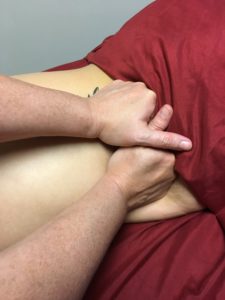 What Is Orthopedic Massage?
What Is Orthopedic Massage?
Orthopedics is the field of medicine that deals with injuries and diseases to the skeleton, joints, muscles, tendons and fascia as well as ligaments and cartilage. Orthopedic surgeons correct skeletal injuries and deformities while Orthopedic massage therapists use a variety of muscular manipulation techniques to help clients recover from injuries and surgery. It is an excellent complementary treatment to physician and surgical care as well as physical therapy. So with modern medical techniques and an evidence-based approach to massage, these practitioners can help you resolve your symptoms without exacerbating your existing conditions. To ensure orthopedic massage is right for you, be sure to talk with your doctor first, especially if you’re pregnant or have deep-vein thrombosis (blood clots).
This form of massage is more physical and medical-based than the emotional type of massage such as Swedish. Furthermore they understand the ways soft tissues (muscles, tendons, and fascia) influence the musculoskeletal system and manipulate trigger areas to release bodily tension, decrease pain, and increase mobility.
Benefits of Orthopedic Massage
Experts have shown that massage helps patients after orthopedic surgery in both clinics and homes. In a study of 60 patients recovering from arthroscopic knee procedures, researchers found that massage therapy provided an affordable, safe, and effective alternative to prescription painkillers. Therefore these observers believe massage allowed patients’ parasympathetic nervous systems to respond by secreting endorphins.
Though orthopedic massage benefits patients with many symptoms and conditions, it has been shown to be particularly effective for certain physical injuries, including:
- Back pain and spasms
- Carpal tunnel syndrome
- Frozen shoulder
- strains and sprains
- Hypertonicity
- Knee pain
- Plantar fasciitis
- Tendonitis
- Tennis and golfers’ elbows
- Whiplash injuries
Massage Techniques to Treat Injuries:
Your orthopedic massage practitioner will generally use a variety of soft-tissue techniques to loosen your muscles and tendons:
- Active engagement – Practitioners use active engagement (or AE) to reach deep, hard-to-access muscles, treat overuse injuries, as well as assist clients with well-developed musculature. Your practitioner will compress your muscles, stroke them lengthwise, and also apply perpendicular motion. It is of particular use for targeting specifically located muscle tightening injuries like whiplash and lumbar pain.
- Muscle energy technique (MET) – Using this method, your practitioner provides resistance while you voluntarily contract certain muscles. MET can help reduce pain—especially back pain.
- Myofascial release – Since your skeletal muscles and connective tissues can be held in place by tight fascial tissues. To conduct these techniques, your practitioner will apply gentle pressure to your body to facilitate stretching of fascia.
- Positional release – This gentle treatment is safe for use on inflamed and painful tissues that are too sensitive for other methods. Therefore your practitioner will manipulate your soft tissues into “positions of ease,” which can temporarily relieve your pain. So by holding these tissues in the proper place for a minute or more, they may lengthen and soften, creating the conditions for long-term pain and symptom relief.
- PNF stretching – Properly called proprioceptive neuromuscular facilitation, this common clinical and sports rehabilitation therapy can increase your passive and active range of motion.
- Trigger point therapy – Your practitioner will use elbows, knuckles, and fingers to put variable pressure on certain trigger areas. Short (10-30 second) intervals of this treatment (also known as neuromuscular therapy) release lactic acid and increase circulation.
What to Expect from an Orthopedic Massage Session
Your practitioner will first begin by talking with you to learn about your medical history and understand your treatment goals. The practitioner will then consider contributing factors and help you create and maintain a treatment plan. Your session will probably last an hour or more.
Be sure to communicate with your practitioner both before and during your session. Since you will likely get better results if your therapist understands your pain level and tolerance. You can also help your therapist determine the exact location of your discomfort as they manipulate and stretch your related body parts. Most importantly, do not be afraid to pause or stop your massage therapy session if you experience overwhelming pain, discomfort, or emotional issues.
In conclusion, after your session has ended, your practitioner may suggest stretches or other self-care exercises you can use to extend the benefits of your therapy. As with any other type of massage, be sure to rehydrate afterward, as your body will likely need to flush lactic acid and other toxins from your system.
References:
- Benefits of orthopedic massage therapy. (n.d.). Retrieved from http://www.ovcmt.com/index.php/blog/Benefits-of-Orthopedic-Massage-Therapy
- Eghbali, M., Lellahgani, H., Alimohammadi, N., Daryabeigi, R. & Ghasempour, Z. (2010). Study on effect of massage therapy on pain severity in orthopedic patients. Iranian Journal of Nursing and Midwifery Research, 15(1), 32–36.
- Ellis, R., & Hing, W. (2008). Neural mobilization: a systematic review of randomized controlled trials with an analysis of therapeutic efficacy. Journal of Manual Manipulation Therapy, 16(1), 8–22. doi: 10.1179/106698108790818594
- Lowe, W. (2010). Active engagement techniques. Massage and Bodywork Magazine for the Visually Impaired. Retrieved from https://www.abmp.com/textonlymags/article.php?article=253
- Myofascial release therapy. (2009). Ganfield, L. Retrieved from http://www.spine-health.com/treatment/physical-therapy/myofascial-release-therapy
- Nerve mobilization techniques. (n.d.). Retrieved from http://orthowellpt.com/nerve-mobilization-techniques/
- Orthopedic massage. (n.d.). Retrieved from http://www.omeri.com/massage/
- Pritulsky, B. (n.d.). Orthopedic massage–the concept and strategies. Retrieved from http://medicalmassage-edu.com/orthopedic-massage-the-concept-and-strategies/
- Sharman, M., Cresswell, A., & Riek S. (2006). Proprioceptive neuromuscular facilitation stretching: mechanisms and clinical implications. Sports Med, (36)11, 929-39.
- Selkow, N. M., Grindstaff, T. L., Cross, K. M., Pugh, K., Hertel, J., & Saliba, S. (2009). Short-term effect of muscle energy technique on pain in individuals with non-specific lumbopelvic pain: a pilot study. Journal of Manual and Manipulative Therapy, 17(1). doi:10.1179/jmt.2009.17.1.14e
- Trigger point myotherapy definition. (n.d.). Retrieved from http://www.spine-health.com/glossary/trigger-point-myotherapy
- Williams, B. (2013). Why should you drink water after massage? Retrieved from http://www.livestrong.com/article/274195-why-should-you-drink-water-after-massage/
